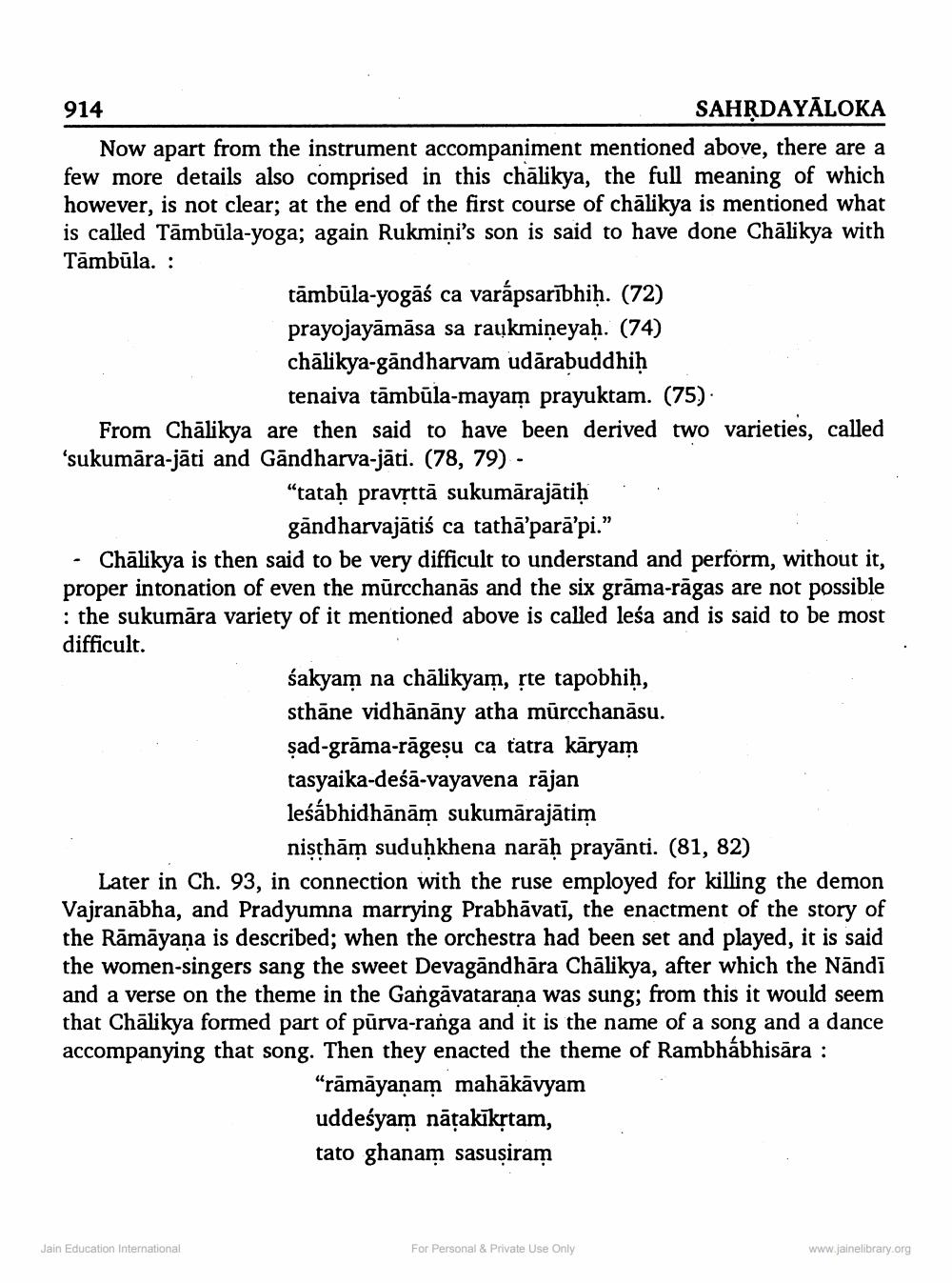________________
914
SAHRDAYĀLOKA Now apart from the instrument accompaniment mentioned above, there are a few more details also comprised in this chālikya, the full meaning of which however, is not clear; at the end of the first course of chālikya is mentioned what is called Tāmbūla-yoga; again Rukmini's son is said to have done Chālikya with Tāmbūla. :
tāmbūla-yogāś ca varápsarībhiḥ. (72) prayojayāmāsa sa raukmiņeyaḥ. (74) chālikya-gāndharvam udārabuddhiḥ
tenaiva tāmbūla-mayam prayuktam. (75) From Chālikya are then said to have been derived two varieties, called 'sukumāra-jāti and Gāndharva-jāti. (78, 79) -
"tataḥ pravsttā sukumārajātiḥ ..
gāndharvajātiś ca tathā'parā'pi.” · Chālikya is then said to be very difficult to understand and perform, without it, proper intonation of even the mūrcchanās and the six grāma-rāgas are not possible : the sukumāra variety of it mentioned above is called leśa and is said to be most difficult.
sakyam na chālikyam, ste tapobhiḥ, sthāne vidhānāny atha mūrcchanāsu. sad-grāma-rāgeșu ca tatra kāryam tasyaika-deśā-vayavena rājan lesábhidhānām sukumārajātim
nişthām suduḥkhena narāḥ prayānti. (81, 82) Later in Ch. 93, in connection with the ruse employed for killing the demon Vajranābha, and Pradyumna marrying Prabhāvatī, the enactment of the story of the Rāmāyana is described; when the orchestra had been set and played, it is said the women-singers sang the sweet Devagāndhāra Chālikya, after which the Nāndi and a verse on the theme in the Gangāvatarana was sung; from this it would seem that Chālikya formed part of pūrva-ranga and it is the name of a song and a dance accompanying that song. Then they enacted the theme of Rambhabhisāra :
“rāmāyaṇam mahākāvyam uddeśyam nāțakīkstam, tato ghanam sasușiram
Jain Education International
For Personal & Private Use Only
www.jainelibrary.org




